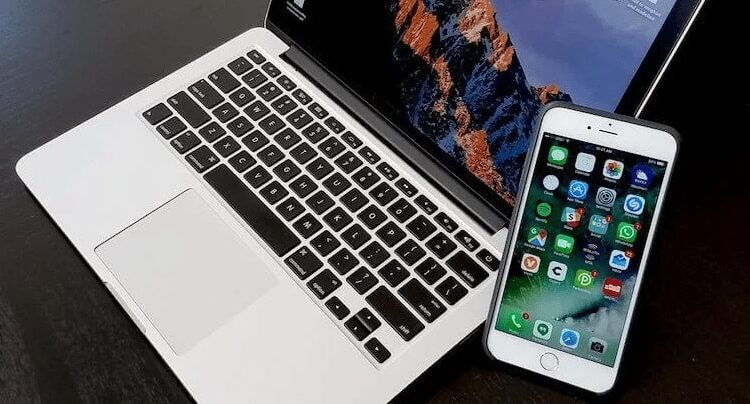Как подключить iPhone к MacBook: разнообразные способы синхронизации
В современном мире, где цифровые устройства стали неотъемлемой частью нашей повседневной жизни, важно знать, как эффективно связать их между собой. Одним из наиболее распространенных сочетаний является iPhone и MacBook. В этой статье мы рассмотрим различные способы подключения iPhone к MacBook и оценим преимущества и недостатки каждого из них.
Вот 3 способа подключить iPhone к MacBook:
Подключение по беспроводному соединению Wi-Fi
Беспроводное соединение Wi-Fi предоставляет удобный способ связи между iPhone и MacBook без необходимости использования физических кабелей.
Порядок действий:
- Убедитесь, что оба устройства подключены к одной и той же Wi-Fi сети.
- На обоих устройствах активируйте функцию Wi-Fi.
- На MacBook откройте «Настройки системы» > «Общий доступ» > «Общий доступ к файлам».
- Выберите «Общий доступ по Wi-Fi» и укажите папки или файлы, которые вы хотели бы сделать доступными.
- На iPhone откройте приложение «Файлы» и выберите «Обзор» > «Общий доступ к файлам». Теперь вы увидите доступные папки с MacBook.
Преимущества и недостатки:
Преимущества:
- Удобство использования без проводов.
- Возможность обмена файлами в реальном времени.
- Не требуется дополнительного оборудования.
Недостатки:
- Ограниченная скорость передачи данных по сравнению с USB.
- Зависимость от стабильного Wi-Fi соединения.
Подключение через iCloud
iCloud — это облачный сервис от Apple, который позволяет синхронизировать данные между различными устройствами, включая iPhone и MacBook.
Порядок действий:
- Убедитесь, что на обоих устройствах включена функция iCloud.
- Настройте одинаковые учетные записи iCloud на iPhone и MacBook.
- Выберите тип данных (контакты, календари, фотографии и т.д.), которые вы хотите синхронизировать через iCloud.
Преимущества и недостатки:
Преимущества:
- Автоматическая синхронизация данных между устройствами.
- Удобство и доступность — данные доступны из любой точки с подключением к интернету.
- Возможность резервного копирования данных.
Недостатки:
- Ограниченное количество бесплатного пространства в iCloud.
- Зависимость от интернет-соединения.
- Ограниченные возможности для синхронизации некоторых типов данных.
Синхронизация устройств по USB
Синхронизация через USB — это классический способ связи между iPhone и MacBook, используя физический кабель.
Порядок действий:
- Подключите iPhone к MacBook с помощью кабеля Lightning — USB.
- При необходимости разблокируйте iPhone и разрешите доступ MacBook к устройству.
- На MacBook откройте приложение Finder, где вы увидите подключенное устройство iPhone.
- Выберите типы данных, которые вы хотите синхронизировать (музыка, фотографии, приложения и т.д.).
Преимущества и недостатки:
Преимущества:
- Высокая скорость передачи данных.
- Возможность резервного копирования и восстановления данных.
- Независимость от интернет-соединения.
Недостатки:
- Необходимость наличия физического кабеля для подключения.
- Возможны неудобства при передвижении устройств во время синхронизации.
Выбор способа подключения iPhone к MacBook зависит от ваших личных предпочтений и ситуаций, в которых вы планируете использовать синхронизацию. Беспроводные методы удобны для повседневного использования, в то время как USB-подключение может быть предпочтительным, когда требуется быстрая передача больших объемов данных. От iCloud можно получить выгоду, если важна автоматическая синхронизация и доступность данных с разных устройств.

